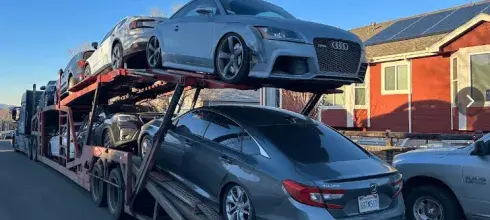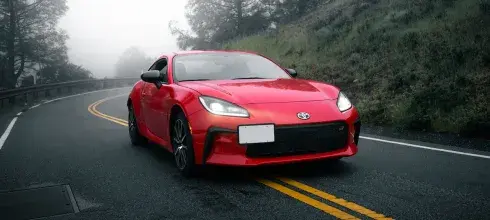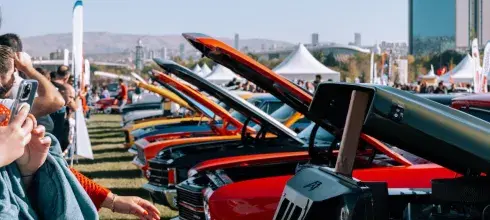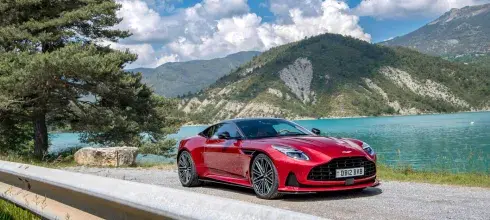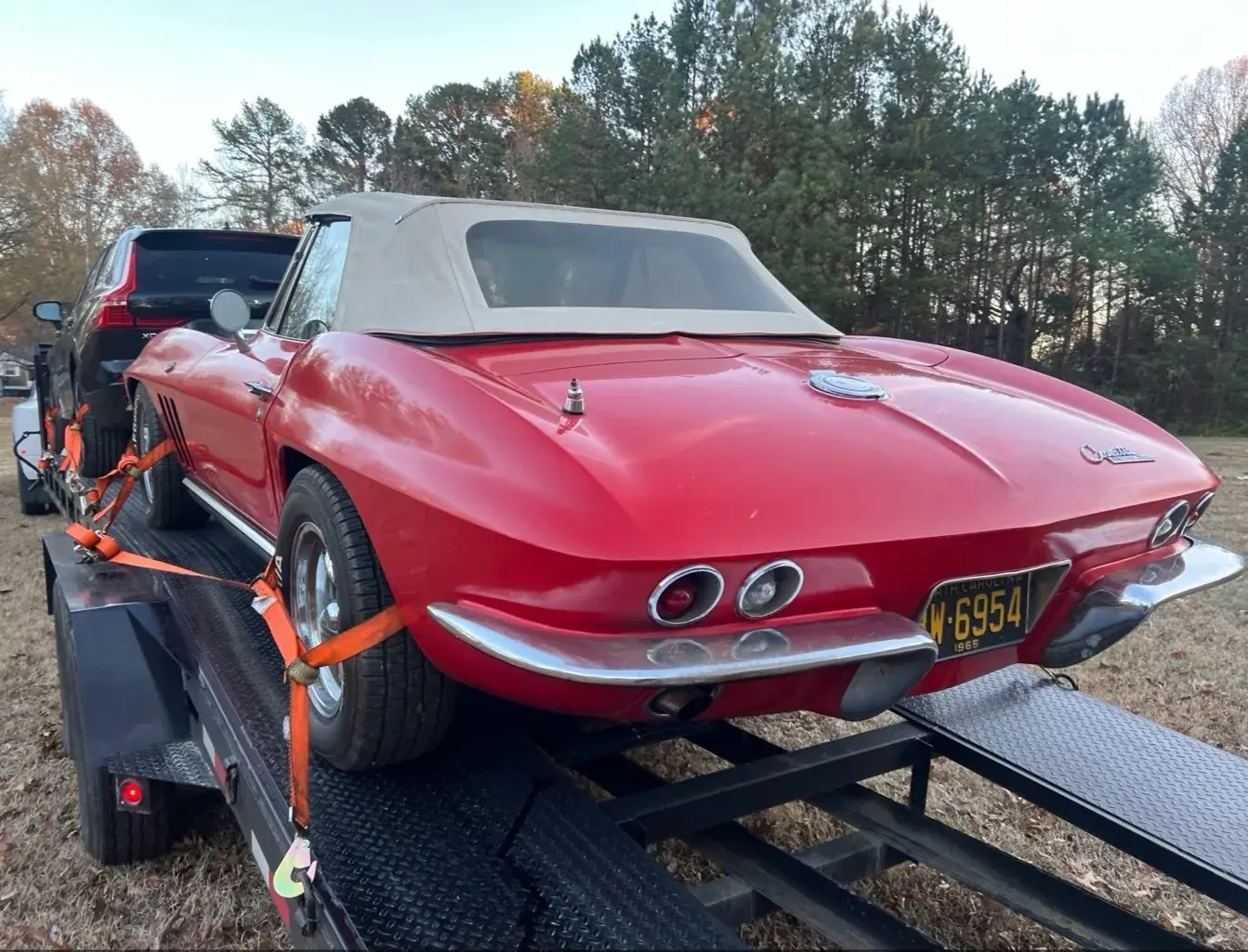
Open vs. Enclosed Car Shipping for Shipping Across the Country
Are you planning to move across the country or to a new state? Have you thought about what you’re going to do with your car? You might even have more than one car that needs moving, which raises an even bigger question. Of course, there is the option of driving yourself, but there’s a much better idea.
If you ever need to move a car from one destination to another, car shipping is a safe, secure, quick, and affordable way to do it. There are generally two options when it comes to shipping a car: enclosed vs. open car shipping.
In this post, we’ll examine the difference between the two and help you decide which is the better option for you. Two types of trailers tend to be used when it comes to shipping cars across country. They are open or enclosed car shipping trailers. There are advantages and disadvantages to each of them.
What is Open Car Shipping?
The most widely used auto transport service is open car shipping. The carriers that offer this service use open trailers. These are the ones you see most when you’re driving on the highway. Open car transport is popular with the general public and car dealerships who use this service to transport new and used vehicles across the country.
An open car transport trailer usually has one or two levels and is large enough to transport as many as ten vehicles at the same time. There are different types (we’ll look at these later), but they all have one thing in common.
When a carrier ships a vehicle using an open trailer, the cargo is exposed to the elements and the surrounding environment. The reason for this is that the trailer has no sides. However, don’t think the vehicles aren’t safe. On the contrary, open transport car shipping is one of the safest and most secure ways to transport a car.
Different Types of Open Transport
As we’ve already said, there are several types of open transport trailers.
Single Vehicle Hotshot Trailer
A carrier that uses this type of trailer typically offers it for short distances only. This type of trailer is often towed by a dually truck, which is a pickup truck with dual rear wheels. Behind the truck, there’s a goose-neck trailer that’s just big enough to haul one vehicle.
Single-vehicle, hotshot trailers are also used when an expedited service is required. This is generally the only time this trailer would be used for long-distance deliveries.
Single-Level Multi-Car Trailer
Single-level, multi-car trailers are used by carriers who want to be able to ship more than one car. The carrier will also use a goose-neck trailer, but in this case, it’ll be much bigger and be able to transport between two and six vehicles.
Rather than using a dually, the carrier might use a semi instead. The benefit of using this smaller type of trailer is that it won’t have such a problem with narrow city streets.
Multi-Level Multi-Car Trailer
A multi-level multi-car trailer is the most common and the one you’re most likely to see on the road. Most car shipping companies use this type of trailer because it’s economical, cost-effective, reliable, and quick.
The Benefits of Open Car Transport
Open car transport is the standard shipping method for most car owners and dealerships. They can use open trailers to transport large numbers of cars. But why is it so popular? Here are some of the benefits you can expect if you choose to ship your car in an open trailer.
Efficient and Fast Service
Open car transport is one of the fastest ways you can ship your car across country. As many as 90% of trucking companies provide this service which means you’ve got a much better chance of finding a carrier when you need one.
Insurance is Included in the Price
You get complete peace of mind because the carrier’s cargo insurance covers your vehicle. In many cases, you pay nothing extra for this coverage.
Affordable Service
If you want to get the best value auto transport service, shipping a car using an open car trailer is the right service for you. Of course, your vehicle is exposed to the elements, but that’s no different than driving it on the highway every day.
Open car transport is a very safe and secure way to transport one or more cars, and there’s almost no chance of it being damaged. After all, car dealerships use this service regularly, so it’s got to be one of the best options.
If you’d like to know exactly how much it would cost to ship your car, get an instant quote for shipping your car across country today.
Topload Placement
Topload placement is one option you can choose. It means the carrier will load your vehicle on the top deck of the trailer. The benefit of this is that no vehicles are loaded above yours, so there’s no risk of fluids leaking onto your car. Another advantage of top load placement is that your car is a little further away from the road surface and the dust and grime.
Suits All Kinds of Vehicles
An open car transport trailer can move a wide range of different vehicles in terms of size, height, weight, or model.
More Eco-Friendly Option
An open transport trailer can transport many vehicles at the same time and uses less fuel which makes it a more environmentally friendly option.
What is Enclosed Vehicle Transport
Enclosed vehicle transport is a way to move vehicles across the country, just the same as open car transport. However, in the case of enclosed auto transport, the carrier uses a trailer that is completely enclosed. What this means for your vehicle is that it’s protected from the elements and any traffic grime. It’s an auto transport option that’s a little more expensive, but it’s still extremely popular, particularly for owners of custom, classic, luxury, high-end, and antique vehicles.
Different Types of Enclosed Auto Transport
Carriers who offer enclosed auto transport use a range of different trailers.
Hard vs. Soft-Sided Trailers
Enclosed trailers can be either soft or hard-sided. Hard-sided trailers tend to be the most common, and they provide the ultimate level of protection for all the vehicles inside. However, soft-sided trailers are sometimes used as well. Also known as curtain-sided, this trailer has vinyl side curtains that are PVC-coated. The carrier can lift the curtain when a vehicle is loaded, making it much easier to secure the cargo inside.
Single-Level, Single-Vehicle Enclosed Trailer
This type of trailer can be either a goose-neck or a bumper pull trailer. The vehicle that pulls the trailer is usually a dually truck. This type of trailer is mainly used to transport valuable or precious vehicles over short distances or for expedited deliveries.
Single-Level, Multi-Vehicle Enclosed Trailer
Enclosed car trailers aren’t just used for transporting one vehicle. There are certain types of trailers that a carrier can use to transport up to three vehicles. The pulling, in this case, tends to be done by a semi.
Multi-Level, Multi-Vehicle Enclosed Trailer
For carriers that need to transport more than three vehicles, there is the option of using a multi-level enclosed trailer.
The Benefits of Enclosed Vehicle Transport
For most people, the standard open car transport is more than adequate. However, certain types of vehicles demand an additional level of attention and care.
Specialty, rare, custom, classic, or antique car owners tend to choose enclosed car shipping. This is because the vehicles inside the trailer are completely protected from traffic grime and debris and the weather. When the vehicle arrives at its destination, it is just as shiny and new looking as when the carrier picked it up.
Several other benefits come with enclosed vehicle transport.
Increased Insurance Coverage
Vehicles that are shipped using enclosed auto transport tend to be of a higher value than your standard saloon. The insurance coverage offered by an enclosed auto transport carrier is much higher. If you own a car worth more than $50,000, the recommended auto transport service is an enclosed one.
Multiple-Vehicle Shipping
You don’t have to limit yourself to shipping one car at a time. Multiple-vehicle enclosed car shipping is available.
Low Ground Clearance
Enclosed auto transport trailers tend to use extended racing ramps and hydraulic lift gates for loading and unloading cars. This is perfect if your car has low ground clearance.
Peace of Mind Protection
Choose to ship your car using enclosed auto transport, and you know it’s going to arrive as clean as when you saw it being loaded onto the trailer. Not only is it protected from the weather, but it’s also protected from dirt, dust, and other traffic grime. Your pride and joy is fully protected throughout its journey.
Open vs. Enclosed car shipping: The Cost
Cost is often a deciding factor when it comes to choosing auto transport. SGT Auto Transport is more than happy to provide you with a free and instant quote. But how is that quote calculated?
Several factors are considered when we work out the cost of car transport open vs. enclosed. They include:
- Distance traveled
- Whether you choose car shipping open or enclosed (enclosed is 30% to 40% more expensive)
- Whether the pick-up and delivery locations are in a metropolitan or rural area
- The make, model, and year of the vehicle you want to transport
- Whether or not the car is running
The time of year can also affect how much it costs to ship a car across the country. For example, New Year and Christmas periods are extremely expensive times of the year. Similarly, Thanksgiving and the Fourth of July can also be more expensive.
There’s also the snowbirds season that can drive up the price of shipping a car. Snowbirds season is the time of year when many people choose to head south to make the most of the warmer weather. What this means is that in the fall, prices from the Midwest and North to the South tend to increase. Conversely, in spring, when all the snowbirds are heading back home, prices in the other direction tend to be higher.
Impact of Vehicle Condition on Shipping Method: Open vs. Enclosed Car Shipping
The current condition of a vehicle significantly influences the decision between open car transport and enclosed auto transport. Here's an exploration of how the status of the vehicle, whether it's brand-new, older, classic, or an everyday driver, shapes this crucial choice.
Brand-New vs. Older Vehicles
- Concerns for Damage: Brand-new vehicles tend to be pristine, and owners are meticulous about preventing any damage. In such cases, enclosed transport provides the utmost protection against external elements and potential road debris.
- Cost Considerations: For older vehicles where cosmetic imperfections are already present, open transport might be a cost-effective choice. The reduced risk of minor cosmetic wear makes it a viable option.
Classic/Vintage vs. Everyday Driver
- Preserving Classic Beauties: Classic or vintage vehicles, with their often irreplaceable nature, warrant the extra protection of enclosed transport. Shielding them from the elements and potential hazards on the road is crucial for preserving their aesthetic and historical value.
- Everyday Drivers and Open Transport: Everyday drivers, used for regular commuting, may be more suitable for open transport. The wear and tear associated with daily use make the added protection of enclosed transport less essential.
Mileage and Wear Considerations
- Low Mileage Classics: Classic cars often boast low mileage, making them more susceptible to wear during transport. Enclosed transport shields them from exposure, ensuring they arrive in the same condition.
- Everyday Commuters: High-mileage everyday drivers may be more resilient to the wear associated with open transport. The cost-effectiveness of this option aligns with the practical use of these vehicles.
Weather and Environmental Factors
- Protection Against Elements: Enclosed transport is ideal for protecting vehicles from adverse weather conditions, such as rain, snow, or hail. Brand-new and classic cars benefit from this safeguard against potential damage.
- Tolerable Exposure: Everyday drivers, especially those with existing wear, may tolerate exposure to mild weather conditions during open transport without significant impact.
Owner's Emotional Attachment
- Sentimental Value: The emotional attachment an owner has to a vehicle plays a role. Classic or sentimental cars may prompt the choice of enclosed transport, reflecting the owner's commitment to preserving the vehicle's significance.
Insurance and Peace of Mind
- Coverage and Assurance: Enclosed transport often comes with higher insurance coverage. For valuable or cherished vehicles, this additional assurance contributes to the peace of mind that the vehicle is well-protected during transit.
In conclusion, the current condition of a vehicle is a pivotal factor in determining the appropriate shipping method. The decision between open and enclosed transport is not solely based on the age of the vehicle but encompasses factors like sentimental value, usage patterns, and the owner's commitment to preserving their vehicle's condition and aesthetics.
Suitability of Open Car Shipping for Specific Routes and Distances
Open car shipping is a versatile option, well-suited for specific routes and distances. Here's an exploration of scenarios where open transport proves more suitable or advisable:
Well-Travelled Routes
- High Traffic Volume: Open car shipping thrives on well-traveled routes characterized by major highways and interstates with high traffic volumes. The popularity of these routes ensures a higher frequency of open car carriers, leading to more competitive pricing and faster transit times.
- Economic Advantage: The prevalence of open carriers on these busy routes often translates to a cost advantage for customers. The higher demand for open transport services contributes to a more competitive market, providing customers with economical shipping options.
Short to Medium Distances
- Cost-Effectiveness: Open car shipping is generally more cost-effective for shorter to medium-distance journeys. The reduced transit time and lower risk of exposure to elements make it an efficient and economical choice for these distances.
- Lower Risks: The risks associated with open transport, such as exposure to weather conditions and road debris, become less significant for shorter trips. Vehicles are less vulnerable to extended exposure, minimizing the potential for damage.
Interstate and Regional Shipping
- Efficiency in Regions: Open car shipping is highly efficient for interstate and regional transport. The well-developed network of highways and interstates facilitates the seamless movement of open carriers, ensuring timely deliveries.
- Availability of Services: Customers seeking transport services between states or within specific regions often find open car shipping readily available and well-suited to meet their needs.
Regularly Serviced Routes
- Established Transportation Corridors: Routes that are regularly serviced by open carriers become optimal choices for this shipping method. The consistent flow of carriers on these established transportation corridors ensures reliability and accessibility.
Frequently Traveled Paths
- Accessibility and Availability: Open car carriers are more accessible and readily available on frequently traveled paths. This accessibility makes it easier for customers to secure transportation services, particularly on routes with high demand.
Availability of Pickup and Drop-Off Points
- Convenience for Customers: Well-traveled routes often come with a network of pickup and drop-off points, enhancing the convenience for customers utilizing open car shipping. The availability of multiple points contributes to the flexibility of service.
In summary, open car shipping shines on popular and well-traveled routes, offering economic advantages and faster transit times. It is particularly advisable for shorter to medium-distance journeys, where the efficiency and cost-effectiveness of open transport become pronounced. The accessibility and availability of open carriers make them a preferred choice for customers seeking reliable and affordable shipping solutions.
Is Shipping a Car Enclosed or Open the Best Option?
For the majority of vehicle owners, open transport is the best option because it’s the least expensive, and they’re not the owner of a vehicle that requires enclosed transportation. In addition, because there are many more open car carriers than enclosed car carriers, you can also get your vehicle shipped much quicker.
The single disadvantage of open car transport is that your vehicle is exposed to the elements, weather, and road debris. Damage from these things is, however, extremely rare. The worst that can happen is that you’ll need to wash your car when it arrives.
Enclosed auto transport, on the other hand, provides total protection from the elements. So, if you don’t want your car to be exposed to the elements because it’s rare, valuable, old, or very precious, you should choose enclosed auto transport.
The main disadvantage of this option is the cost. As we’ve already mentioned, the cost can be between 30% and 40% higher. Another disadvantage worth mentioning is that it could take a little longer because there aren’t as many carriers available.
Unless you’re shipping a rare, expensive, or restored classic car, open transport is likely to be your best option. You’ll be able to ship your car the quickest and for the least amount of money. However, ultimately, the choice depends on your shipping needs and budget.
Final Thoughts
Whether you’re shipping a car in an enclosed or open trailer, knowing you’re working with a reliable, trustworthy, and experienced auto transport company like SGT Auto Transport is worth its weight in gold. Understanding the difference between open and enclosed car shipping is also going to help with the decision-making process.
Get an instant quote for shipping your car across country by telephone - (864) 546-5038, Live Chat, or use our instant quote calculator!




